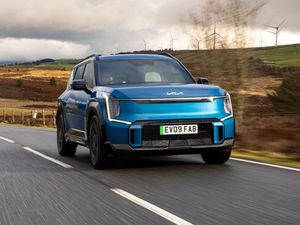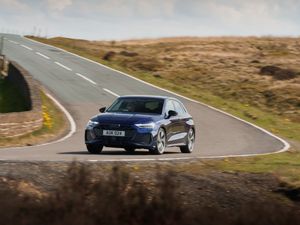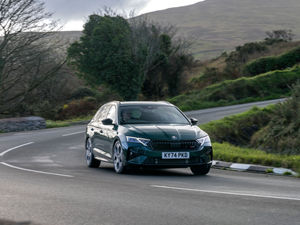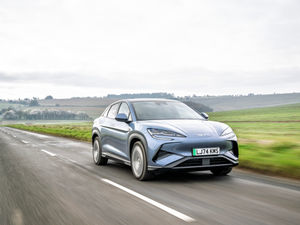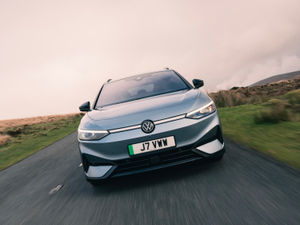First Drive: The Renault Zoe is an interesting alternative to other electric vans
Renault has introduced a van version of its popular electric Zoe hatchback. Ted Welford finds out if it’s worth choosing.
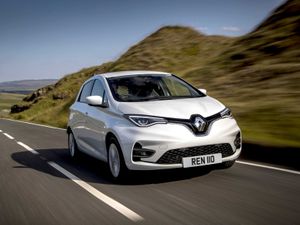
What is it?

>
Not so many years ago, plenty of small cars could be had as a van. Vauxhall did it with its Corsa, Peugeot with its 206 and 207, and we could go on. In more recent years, however, these models have fallen out of favour.
But in an electric era, such vans might just have a place once again, particularly for those that don’t need a huge load-carrying ability. That’s what Renault is aiming for with its new Zoe Van – a commercial version of its best-selling EV. But does it have its place, or would you be better off with a conventional electric van instead?
What’s new?

>
Coming from Renault’s ‘Pro+’ van brand, the Zoe Van really is just the standard supermini with the rear seats removed. Based on the heavily reworked version of this French hatchback, which debuted in 2019, it offers an electric range of up to 245 miles and the same familiar interior.
Behind the front seats is where all has changed, though it really isn’t that much more than a standard Zoe with the rear seats ripped out, a hard-lined boot liner put in place and a mesh cage to separate the interior from whatever odds and ends you have in the back.
What’s under the bonnet?

>
As we’ve said, nothing about the Zoe’s powertrain has changed for this new van model, with Renault still using the familiar ‘R110’ powertrain, which puts out 108bhp and 225Nm of torque. By EV standards, those figures aren’t a lot, while 0-60mph takes 11.4 seconds and the top speed is capped at 84mph.
A 52kWh battery is also used, which Renault claims allow for a range of 245 miles, or 239 miles if you go for the ‘plus’ version that gets larger alloy wheels. Though we didn’t see anywhere close to those figures, a range of 200 miles is possible if driven carefully.
It’s worth choosing the ‘Rapid Charge’ version too, as without this you’ll be hamstrung by slow charging, making longer trips that exceed the Zoe’s range almost unfeasible. With the rapid charging box ticked (it costs £1,050), it means the battery can be charged to 80 per cent in an hour and 10 minutes.
What’s it like to drive?
It shouldn’t come as any huge surprise, but this van drives like any regular Zoe. While not as powerful as many EVs on the market, the zippy electric powertrain means this Renault never feels slow, providing plenty of pace away from the line, and not feeling lethargic even as you gather speed.
It’s great around town too, with light steering making it very easier to manoeuvre through small gaps, particularly parking. Side visibility is a bit compromised though, not just because of the lack of rear windows, but because the mirrors aren’t positioned properly to check things are in your blind spot, for example. Refinement isn’t the Zoe’s strongest point either, with the limited sound deadening meaning this van is quite noisy at speed from all the road and tyre noise.
How does it look?

>
If you want a van that doesn’t look like a van at all, the Zoe is a great option. It retains the same exterior look as the standard hatchback, and though the rear windows are entirely opaque, they’re black rather than colour-coded to the car, meaning it actually looks like a regular car with particularly dark tinted windows.
While the Zoe’s design isn’t the most cutting-edge, the bubble-like shape and compact dimensions are perfectly pleasant, with full LED lights at the front and rear (including sequential indicators for the latter) adding extra appeal to this Renault, and which you don’t tend to get with other vans.
What’s it like inside?

>
Sat in the driver’s seat, it’s like any other regular Zoe in here, though the immediate thing you notice is the lack of adjustability to the seating position, as they’re fixed in place for height and can make you feel like you’re sitting on top of the car, rather than in it.
An easy-to-use touchscreen is also included, while clear and easily customisable digital dials give the Zoe Van a more modern feel than many other commercials. Clear buttons on the steering wheel and generally excellent ergonomics are a bonus too, though the overall cabin does feel a bit cheap.
Behind the rear seats, you get a mesh bulkhead and then a flat, wipe-clean floor installed that can handle a payload of up to 457kg or one cubic metre of load volume. It comes with twin parcel shelves to hide any goods in the rear too (unlike other vans, the back window is just glass). Though the overall job isn’t the most polished, it is perfectly acceptable for a van.
What’s the spec like?

>
Renault offers the Zoe Van with two trims, with the entry-level Business model coming with plenty of kit, including full LED headlights, cruise control and keyless entry. You also get climate control included, along with a seven-inch touchscreen with Android Auto and Apple CarPlay smartphone connectivity.
A ‘plus’ specification is also offered, which gives the Zoe a more appealing look thanks to 16-inch alloys (rather than 15-inch steelies), useful rear parking sensors, lane keep assist and satellite navigation. Rapid charging is also included as standard.
As for pricing, the Zoe Van costs from £29,440 and rises to £32,490 for the Plus model, with both prices including VAT and the £2,500 plug-in van grant. Considering more practical electric vans, such as the Citroen e-Berlingo, are available for similar money, it does make you doubt the Zoe’s appeal.
Verdict
There are two sides to look at the Zoe Van. Take it as a small electric hatchback that essentially has a huge boot and there’s quite a lot of appeal there, not least with its decent equipment levels and a respectable real-world range of around 200 miles – which exceeds nearly every battery-powered van on the market.
But if space and van-like ability are a must, the Zoe’s relatively small cargo space and payload lags behind all of the small vans on the market, and it’s not really any cheaper either to justify it.

